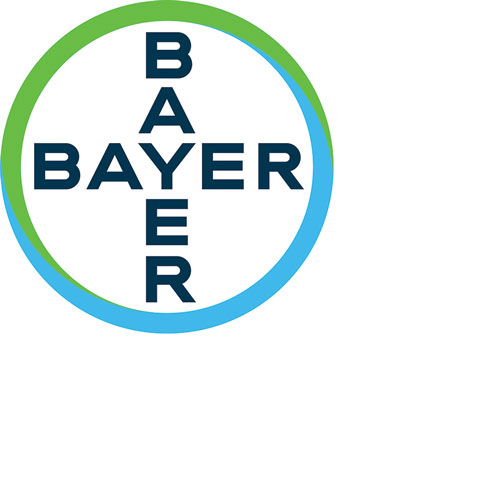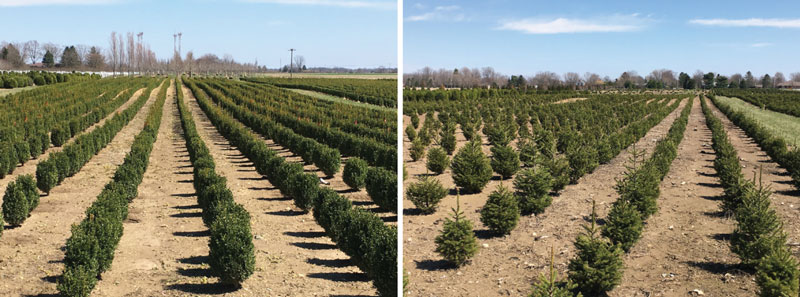11/1/2020
Plant Protection Pointers & Cost Savings
Dr. Aaron Palmateer

Most growers want to reduce expenses in their day-to-day operations. While they can’t afford to cut corners when it comes to plant protection, they can save time and labor, and avoid the potential loss of plants by making the right pesticide decisions. Using preventative measures combined with strict sanitation will pay off in the long run. Starting clean and staying clean is the best approach any grower can take to be successful with cost-effective pest and disease management.
Early detection and proper identification of plant pests is the foundation for a successful management program. Ideally, growers should rely on multiple options using a combination of compatible and effective management strategies—such as cultural, mechanical, chemical, biological and host resistance—when available. Using an integrated approach reduces the reliance on just one option, such as solely spraying chemicals for the control of pests, weeds and diseases. Successfully implementing an integrated pest management (IPM) approach should include cost-effective management strategies that result in the production of high-quality plants.
Following strict sanitation guidelines to maintain a clean environment minimizes opportunities to introduce pests, diseases and weeds. Using new potting media and properly disinfesting reused pots and materials helps reduce pathogenic microorganisms (bacteria and fungi), tiny insects (eggs and pupae) and even weed seed from carrying over from one production cycle to the next. Taking the time to install physical barriers, such as ground cloth, reduces exposure to the soil beneath containerized plants, minimizes the potential for weed contamination, and insect and pathogen populations that reside in the soil. Properly cleaning and removing fallen or old plant debris and soil from the entire production area (floors, benches) will reduce the potential for contamination and subsequent issues.
 Pictured: One of the best ways to control weed costs is with a preemergence herbicide. Two excellent examples of control are in these two pictures of plantings (boxwoods, left, and spruce, right) treated with Marengo herbicide.
Pictured: One of the best ways to control weed costs is with a preemergence herbicide. Two excellent examples of control are in these two pictures of plantings (boxwoods, left, and spruce, right) treated with Marengo herbicide.
One of the most important steps is staying on top of potential issues through routine scouting and using resources like plant diagnostic labs to identify problems. Information gained from routine scouting, such as disease incidence and severity, insect numbers and weeds should be used to create a management plan. The ability to quickly identify areas or crops that could be the initial source of inoculum for disease, insect hot spots or weed infestations is crucial for adequate control. To make cost-effective pesticide applications, growers have to know what they’re attempting to control.
For example, if a grower has downy mildew and treats for Alternaria, he/she stands to lose plants and waste money by applying ineffective products. Selecting products that specifically target the pest, disease or weed can save much time and frustration. Documenting and keeping records of symptoms associated with pests, diseases and disorders will aid in early detection and successful control in future crops. These treatments will be more cost effective when making informed management decisions, as opposed to guessing.
Ways to manage production costs
One of the biggest challenges that ornamental producers face is staying on budget and to do this they must manage production costs. Some greenhouse and nursery growers do this based on sticker price alone and only purchase the most inexpensive plant protection products available. The problem with this approach is that they’re not taking into account the cost-in-use of a product. Price is definitely a factor, but growers should account for the additional value a plant protection product may bring to their operation. For example, more important than sticker price is the length of control a product can provide.
When it comes to plant protection products, length of control can be most easily seen with herbicides and weed control. Weeds are much easier to spot in a nursery than other pests, such as mites, insects and pathogens. However, weed management for container nursery crops can cost upwards of $4,000 per acre (Dr. Joe Neal, NC State). One of the best ways to reduce these costs is to use preemergence herbicides. Combined with effective sanitation, preventative applications of preemergence herbicides can cut production costs significantly and save money in time and labor required to control weeds.
Preemergence herbicides can be applied to production areas (including ground cloth) where containerized plants will be placed, “row middles,” gravel roadways and holding areas for successful weed management. This approach minimizes the potential for weed outbreaks, reducing labor costs for hand weeding and postemergence herbicide applications. In fact, a single application of Marengo herbicide at the high labeled rate can provide weed control for up to eight months.
Every time a grower has to make a pesticide application, there’s site preparation, application prep (i.e., preparing equipment and product mixing), application of the treatment and then any necessary clean-up (equipment, disposal, etc.). Avoiding more frequent applications saves time and money, and highlights the value of using Marengo for long-lasting weed control.
Most greenhouse and nursery growers account for the total cost per acre of control, but what they often overlook is the total cost per acre per month of control. Using Marengo as an example, one will find the cost per acre to be similar with other preemergence herbicides, but when considering the length of control and the reduced number of applications, the cost savings and overall value of the product becomes apparent.
Bayer offers an easy way to evaluate your herbicide costs with a cost-in-use calculator. Users can compare any herbicides and obtain cost analysis to maximize their investment. Growers enter information that fits their exact use patterns and can see side-by-side comparisons for any herbicides they choose. (To try the calculator, go to https://es.bayer.us/marengo-calculator.)
Some other factors to consider for cost savings when choosing plant protection products include spectrum of activity and application flexibility. Bayer recognizes and continues to bring new innovation with these criteria in mind. This is evident with products that offer a broad spectrum of activity, such as Broadform fungicide, which combines two different modes of action to control more than 50 different plant pathogens and minimizes the potential for buildup of resistance.
Another example can be seen with Altus, a systemic, non-neonicotinoid insecticide for control of piercing/sucking insects. Altus is an EPA reduced-risk pesticide with minimal application restrictions allowing for use on plants before, during or after bloom. Bayer offers an easy way to evaluate your insecticide costs with a cost-in-use calculator. Users can compare any insecticides and obtain cost analysis to maximize their investment. Growers enter information that fits their exact use patterns and can see side-by-side comparisons for any insecticides they choose. (To try the calculator, go to https://es.bayer.us/altus-calculator.)
When making decisions for pest and disease management, be sure to consider the value a product brings and not just the sticker price. GT
Dr. Aaron Palmateer is a Senior Technical Support Representative, Ornamentals for Bayer.
For more information on Marengo herbicide, Altus insecticide and other solutions from Bayer for managing pests in greenhouse and nursery production, visit es.bayer.us/ornamentals.